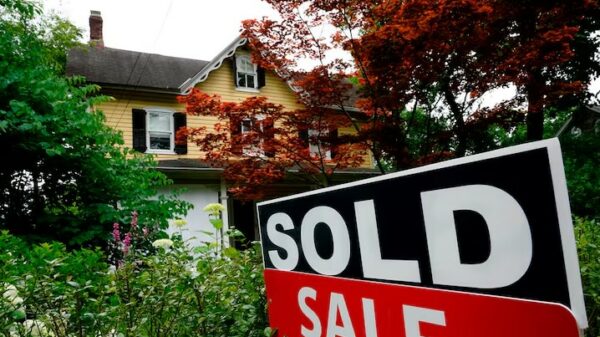The increasing credit card debt levels across the nation pose a significant risk to people's savings. A recent annual survey by the personal finance website Bankrate revealed that more than 36% of American adults have higher credit card balances than they have in emergency savings funds. This percentage is the highest it has ever been since Bankrate began conducting this poll over a decade ago.
Several other recent reports also indicate consumers are struggling to keep up with their credit card payments. Bankrate found in a separate survey that approximately half of all credit card holders now carry over unpaid balances from one month to the next, up from 39% in 2021.
TransUnion reports that the average credit card borrower currently holds $6,360 in debt, which is an all-time high level.
“It’s worrisome, because credit-card rates are at record highs,” said Ted Rossman, senior industry analyst at Bankrate. “Unfortunately, we’re moving in the wrong direction on a lot of this.”
Interest rates and credit card balances are rising
Credit card balances are increasing at a similar pace as rising interest rates. The higher the interest rate, the larger the payment required to reduce the outstanding balance.
Data from the WalletHub index shows that the average credit card currently charges an interest rate of 21.5%. This is the highest average interest rate on record for credit cards.
On top of that, Bankrate found, 43% of cardholders with debt don’t know how much interest they’re paying. Credit-card debt is rising at a time when America is struggling to save.
The personal savings rate stood at 3.8% in January, according to federal data, meaning that consumers set aside only a smidgen of their income as savings.
While not the absolute lowest level, the current savings rate is close to the bottom of the range seen over the past decade. For most of the last 10 years, the savings rate has typically been above 5%.
In Bankrate's annual emergency savings report published last month, more than two-fifths of adults admitted they did not have enough savings to cover an unexpected expense of $1,000 or more. This report compiled data from several recent surveys.
However, when looking at the longer-term trend, Americans appear to be improving their savings habits. Median household “transaction accounts”, which include savings and checking accounts, increased from around $5,000 in 2010 to $8,000 in 2022 according to the Federal Survey of Consumer Finances data.
But this federal survey does not fully capture the rapid rise in credit card interest rates that began in mid-2022.
According to data from WalletHub, the average interest rate charged on credit cards climbed substantially from 15.1% in May 2022 to 21.5% in November 2023.
Credit card rates increased alongside the broader rise in interest rates driven by federal regulators aggressively raising rates in a historic effort to rein in inflation. Inflation peaked at over 9% in the summer of 2022, marking the highest level in 40 years.
Building savings vs paying credit card debt
The combined data indicates that many Americans are facing a difficult choice: should they prioritize building an emergency savings fund or focus on paying down their credit card debt?
Financial advisors typically recommend that Americans accumulate enough emergency savings to cover 3 to 6 months' worth of living expenses. However, less than half of the population actually follows this guidance.
The Bankrate survey found that only 30% of adults had enough emergency savings to cover 6 months of expenses. Approximately half had savings equal to 3 months' expenses. And one-fifth of respondents reported having no emergency savings whatsoever.
Credit card debt is more expensive
Simply put: The card debt costs you more than you’re earning from the savings.
If the annual percentage rate on the credit card is higher than the rate on the savings account, “it makes sense to prioritize paying off that credit card debt,” said Niv Persaud, a certified financial planner in Atlanta.
“You should absolutely use savings to pay down the credit card debt,” echoed Randy Bruns, a certified financial planner in Naperville, Illinois.
Once you’ve paid off the card debt, Bruns said, consider setting up regular deposits into your savings to rebuild the balance.
Another way to jump-start your savings: Make a generous contribution when you receive a windfall, Carlisle said: a bonus at work or a tax refund.
Catherine Valega, a certified financial planner in Boston, recommends striking a balance between reducing debt and building savings.
“We often split payments, so that some is going to that emergency savings,” to cover new tires or home repairs, “and some going to pay down debt,” she said.
If you use emergency savings to pay off credit card debt, “try to keep at least one month of essential expenses in your emergency reserve,” Persaud said. “This way, you don’t have to rely on your credit card if an emergency arises.”
Pro tip for credit cards
If you are determined to pay down your credit card balance, experts advise taking an aggressive approach with your payments. The minimum payment amount calculated by the card company typically only covers the interest due plus 1% of the outstanding balance.
As an example, let's say you have a $6,360 balance at a 22% interest rate. If you only make the minimum payments, it would take approximately 25 years to fully pay off the debt. Additionally, you would end up paying around $11,000 in interest on top of the $6,360 principal balance according to Bankrate's calculator.
To make meaningful progress on paying down the balance, experts recommend stopping any new charges on the credit card. This allows your payments to go entirely towards reducing the principal balance rather than accruing new charges.
Next, bump up your payments. Consider a monthly sum equal to 5% of your gross income. Alternatively, make double the minimum payment in the first month. Pay the same dollar amount in the months that follow, as the balance falls.
If you have more than one card, pick one and get serious about paying it off. Start with the card that carries the highest interest rate, or the one with the smallest balance. Soon enough, you’ll be able to turn your attention to savings.
“It’s hard to build wealth when you’re paying 20% or 25% interest,” Rossman said.
This article first appeared on USA Today.









